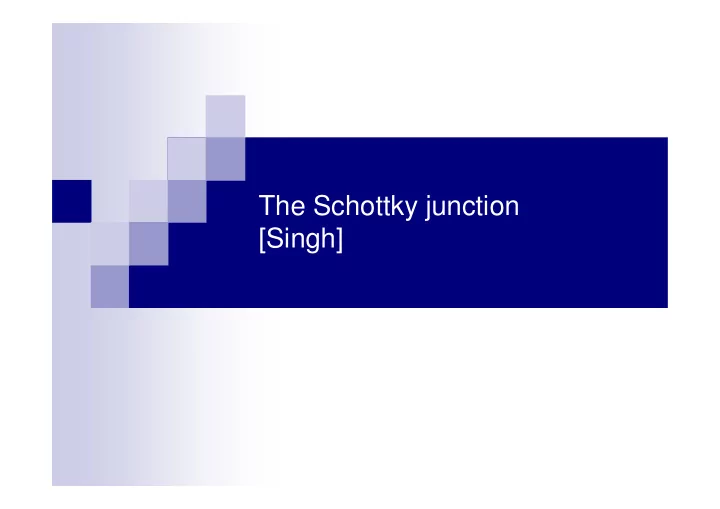

The Schottky junction [Singh]
Ideal case, no surface states Let’ consider n-silicon and a metal with ϕ m > ϕ s χ s is the electron affinity When the junction is formed, - W F must be constant - the vacuum energy levels, close to the junction, remain the same
So, there is band bending on the semiconductor side. Charges: - a sheet of electrons on the left - a layer of positive ions on the right A Shottky barrier appears together with a built-in potential
Similarly, for p-silicon and a metal with ϕ m < ϕ s Real case Actually, ϕ b is almost independent on the type of metal; it mostly depends on the surface states (due to chemical defects, broken bonds...) at the interface. So, W F is blocked, “pinned”, at a certain level q ϕ 0 over BV Then, the barrier is and is (almost) independent on the applied voltage.
Direct bias The electrons of the semiconductors “see” a lower barrier => they can pass it => large current Inverse bias The electrons of the metal “see” the same (rather high) barrier => small, constant current
It may be found that with I S larger than the typical I 0 of a pn junction. Indeed, Schottky diodes - have lower threshold - have higher inverse saturation current - are faster (there is no diffusion capacitance) than pn diodes. The case p-silicon and ϕ ϕ m < ϕ ϕ ϕ ϕ ϕ ϕ s is the same, but looking at the holes “from below”
Ohmic contacts An ohmic contact is obtained in the other two cases - we have accumulation , instead of depletion, so we are plenty of carriers in both directions For example, for n-silicon and ϕ m < ϕ s The four cases are summarised here �
Ohmic contacts With commonly used metals and semiconductors, we would have rectifying contacts (case a and d ). If however the semiconductor is highly doped, the depletion zone is very thin => possible tunnel effect => current in both directions increasing doping
Recommend
More recommend